Nimrud: Photos show IS destruction of ancient Iraqi city
- Published
The BBC was the first international broadcaster to reach Nimrud and assess the destruction
The scale of the damage done by Islamic State militants to the ancient city of Nimrud is beginning to emerge, two days after it was retaken by Iraqi forces.
Much of the area lies in rubble, with shattered statues and a ziggurat reduced to a fraction of its size.
IS circulated video footage showing militants blowing up or smashing up monuments and artefacts last year.
Government forces recaptured Nimrud as part of a wider assault on Mosul, the last major IS stronghold in Iraq.
A senior source in the Iraqi military's Nineveh Operations command reported significant advances around the city on Tuesday.
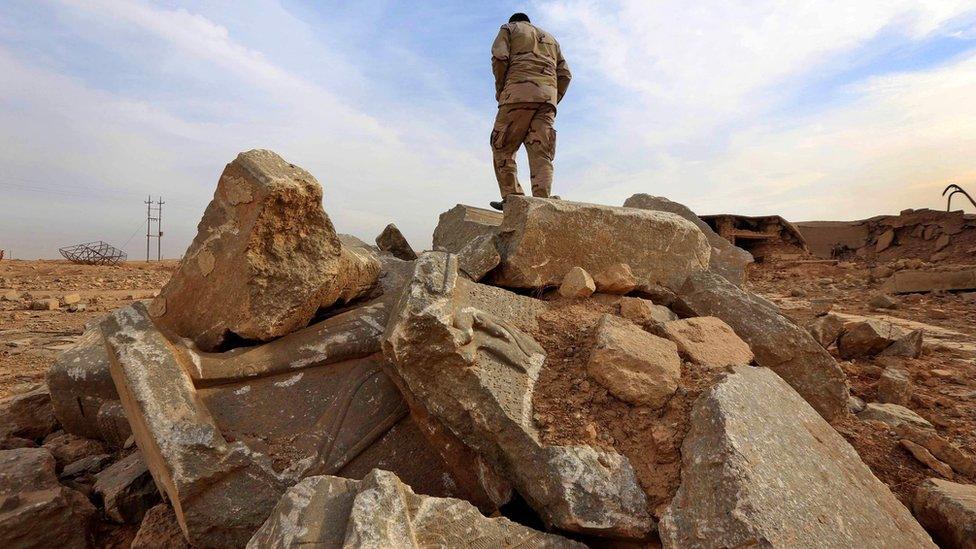
A local militia commander said: "One hundred percent has been destroyed"

The city of Nimrud, about 32km south of Mosul, was founded more than 3,300 years ago
Warplanes bombed IS positions in Mosul's airport, on the southern outskirts, as units of elite Rapid Response Division encircled the nearby village of Albu Saif.
Counter-Terrorism Service personnel meanwhile fought fierce battles with IS militants in the eastern district of Qadisiya al-Thaniya, according to the source.
The city of Nimrud, about 32km (20 miles) south of Mosul, was founded more than 3,300 years ago. Then known as Kalhu, it was a capital of the Assyrian empire.
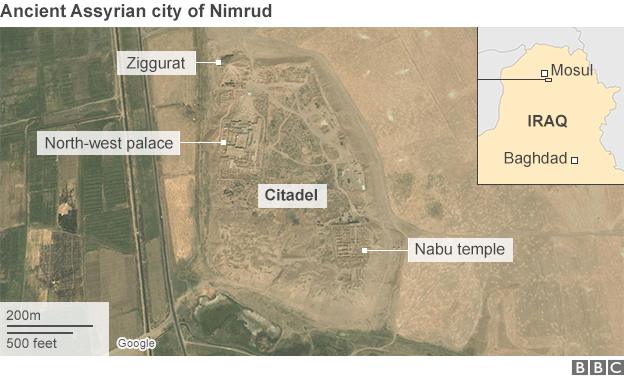
The site covered some 3.5 sq km (1.35 sq miles) and included a prominent "citadel" mound, the palaces and tombs of Assyrian kings, temples to their gods, colossal statues depicting lions and winged bulls, and widely revered frescos.
IS militants captured Nimrud in June 2014, shortly after they overran Mosul, routing the Iraqi army.

An AFP journalist holds up a photo showing what appears to be remains of a ziggurat that was once one of the tallest surviving structures from the ancient world
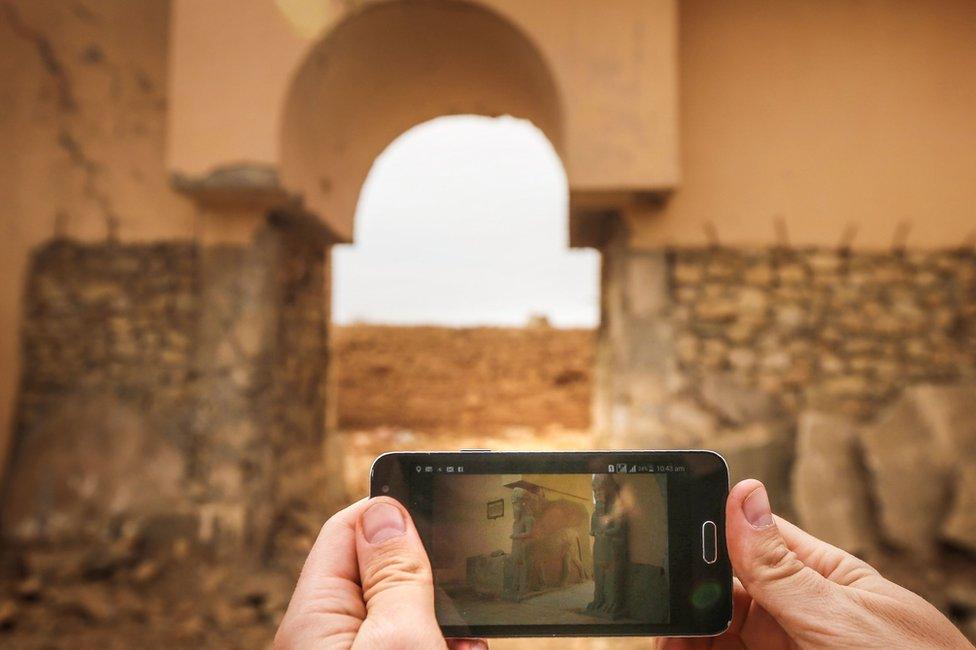
This photo shows the archway once guarded by two colossal statues of winged bulls
In March 2015, the Iraqi tourism ministry reported that militants had used bulldozers and other heavy vehicles to vandalise the site.
A month later, IS published a video showing militants smashing statues and frescos with sledgehammers before blowing up much of what remained.
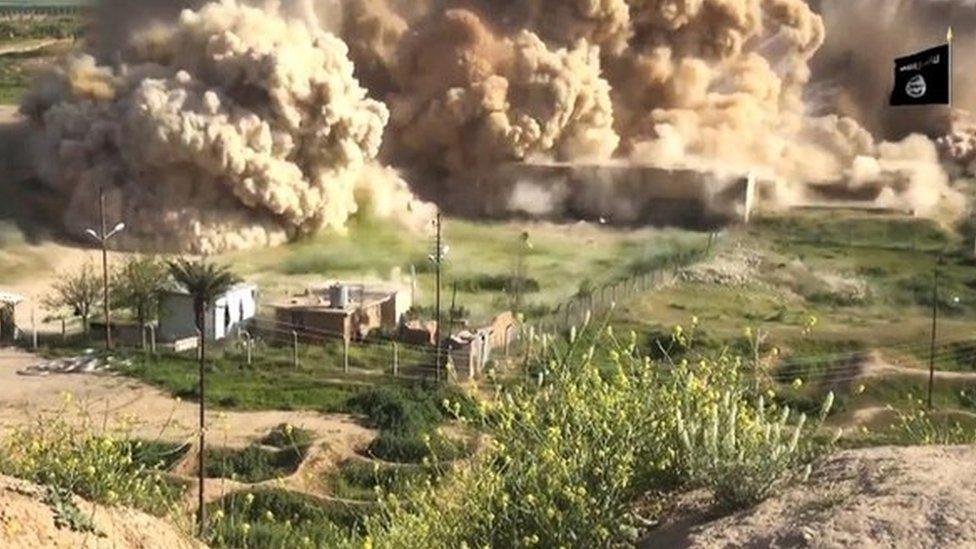
IS posted a video in April 2015 showing parts of Nimrud being blown up
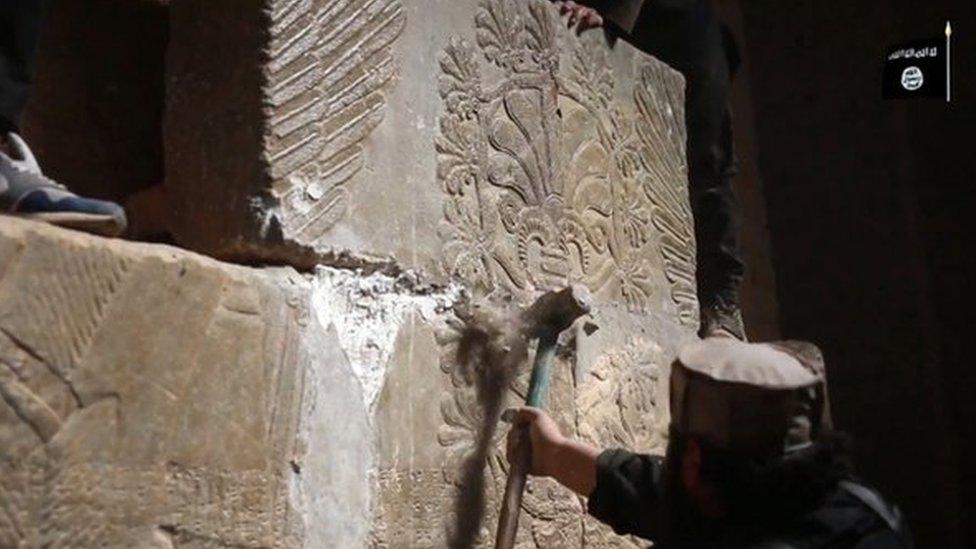
The video also showed militants smashing artefacts with sledgehammers
On Tuesday, a pro-government tribal militia commander visiting the site for the first time in two years told the AFP news agency: "When you came here before, you could imagine the life as it used to be. Now there is nothing."
"One hundred percent has been destroyed," Ali al-Bayati added. "Losing Nimrud is more painful to me than even losing my own house."
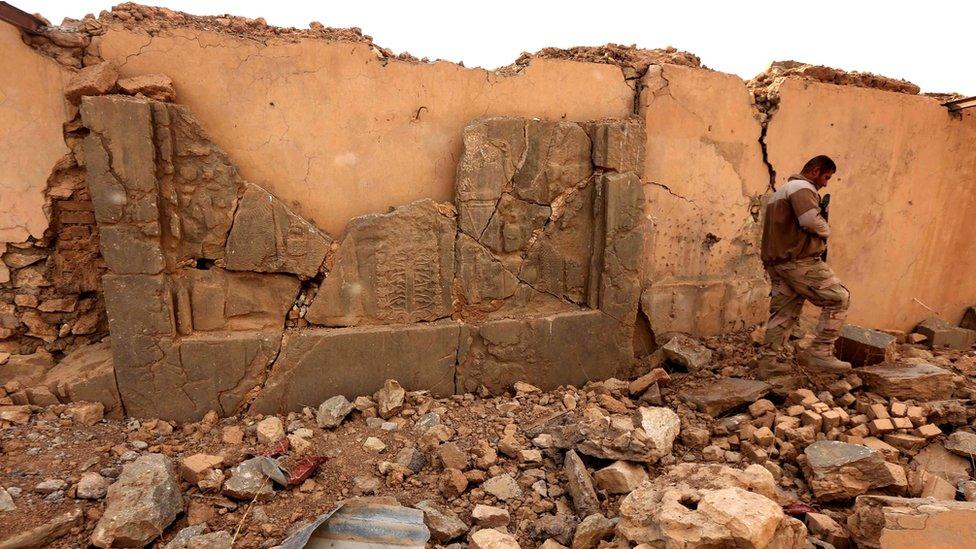
IS considers pre-Islamic art and architecture as idolatrous
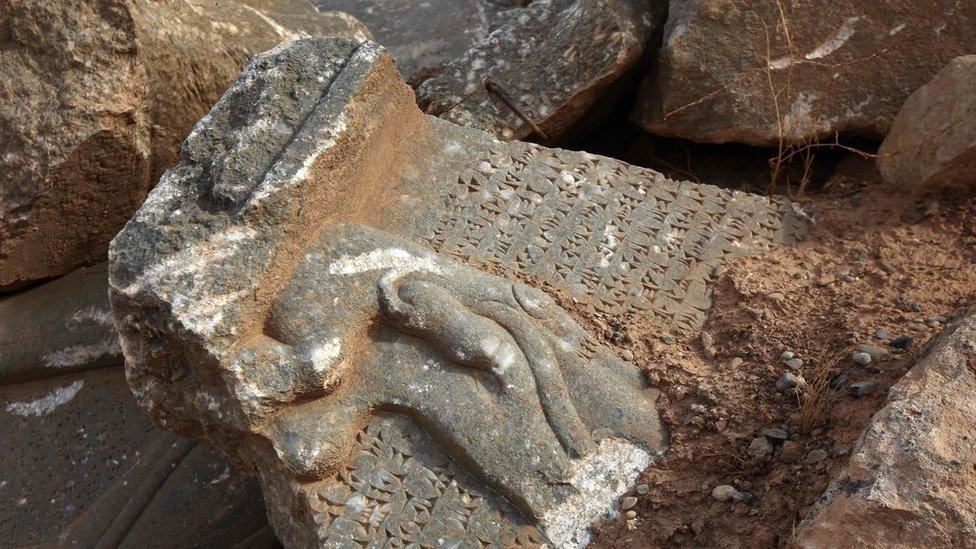
Unesco has denounced the destruction of Iraq's heritage as a "war crime"
The UN Educational, Scientific and Cultural Organization (Unesco) described the destruction of Nimrud last year as a "war crime", saying IS was "clearly determined to wipe out all traces of the history of Iraq's people".
The jihadist group has denounced pre-Islamic art and architecture as idolatrous, and has destroyed several other ancient sites in Iraq and neighbouring Syria.